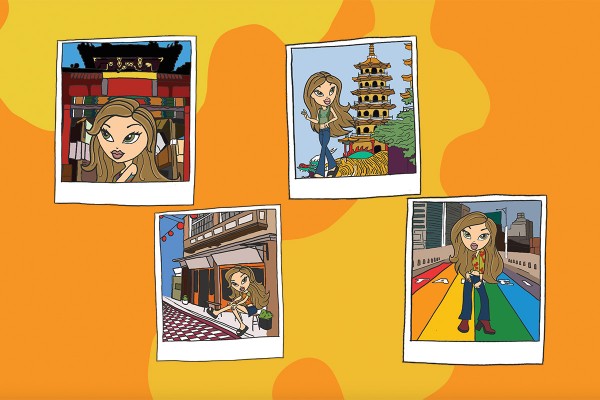My journey started back home in Ūawa, with my whānau helping me gear up for my first-ever trip abroad – beyond Aussie, at least. From Christchurch, across to Hong Kong and finally over to Taiwan, it took five months of prep before we were even ready to step on that plane. Leaving home felt like being pulled from safe shores and thrown into the open ocean. Yet amid the chaos – airports, train stations, customs, language barriers – there was excitement, nerves, and a sense of anticipation for everything waiting beyond the horizon.
The moment we touched down, I knew: this was not Aotearoa anymore. Everything pulsed louder, faster, warmer, busier. Even the air was different. I was one of two kaiārahi Māori, looking after ten tauira Māori from Ōtākou Whakaihu Waka and Te Herenga Waka, travelling as part of Taihaere – The Indigenous Exchange Program. For six weeks, Taiwan became our classroom. Our kaupapa? Cultural exchange and strengthening hononga with the many iwi of Taiwan, where some kōrero hints at our voyaging ancestors’ origins before navigating Te Moana-nui-a-Kiwa.
Taipei: A Symphony of Senses
We spent three days in Taipei during the Lunar New Year, discovering a city where tradition and modernity collided. Normally bustling, the streets were quieter over the holiday, yet the lights, lanterns, and fireworks more than made up for it. The city hit every sense at once: incense smoke curling through the air, neon signs buzzing above, street food sizzling, and fireworks cracking against the skyline. From gondolas soaring above the city to Taipei 101 (you just had to be there), shopping streets teeming with colour and endless culinary adventures – including stinky tofu, which I’ll politely never touch again – that were just out of this world. The squat toilets, though? No further explanation.
Amid the city buzz, we escaped to Zhinan Temple, high up in the hills, where we sampled Taiwan’s world-famous oolong tea right at the source and hung gold intention badges – even in the chaos of a new world, these rituals of grounding and connection were incredibly anchoring.
Language could’ve been a massive barrier, but three incredible tuakana from Taiwan became our bridge. They guided us through travel, late nights, early starts, doctor's visits, laundromat visits, peanut allergies, and occasional stress, helping us find rhythm in the unfamiliar.
Where Two Worlds Collide
The journey was rewarding, but relentless – every single day, we were on the go. We ventured to Paiwan, wandering the village of La’i and attending a wedding with more than 1000 people, where we were honoured to be manuhiri. In Rukai, listening to the emotional kōrero of Adiri and Ginulan, villages displaced from their whenua after a devastating typhoon. At Pandan Asang school – their kura kaupapa equivalent – we were welcomed into routines: 6am to 6pm days, fully community-driven, anchored by games, kai, and aroha. In Siaolin, we stood in quiet reflection at the memorial for the 2009 typhoon that displaced hundreds of people, and the village of Tayal taught us their concepts of food sovereignty, showing how their communities grow produce such as cabbage and kiwifruit to sustain their people. Further down the road, in Wulai, we relaxed in natural springs before journeying to Bunun, where we participated in a sacred ceremony alongside one of our tuakana and her whānau. We took off to Amis, where we saw wāhine leading their people, with men taking care of the whare – a refreshing inversion of roles.
Then, after weeks of concrete cities and deep ngahere, reaching the coastline was a gift. Being a coastie, the moana always brings me home – salty air, rolling waves, sunlight dancing on water. That’s when we arrived in Tao, on Lanyu Island – the place where home called the loudest.
Tangata Tao: Echoes of Home
Seeing the Tao honour both land and sea, as we do, eased homesickness and calmness seeped in. The Tao are a selfless people, yet their land bears scars – nuclear waste dumped endlessly and six different waves of colonisation that shifted names, identities, and histories. Still, they welcomed us with open arms. Their waka, practices, and wero didn’t just mirror ours – they felt familiar, like echoes of home from across the ocean. The traditional underground homes breathed like marae, and presented us with their own wero, similar to our own. On our final night, we performed for the tangata whenua and taught them our haka. Whole whānau joined in, and it felt like being back on the marae at home. That’s where our worlds met.
Not Ūawa, But Close
Leaving Taiwan, I knew I was bringing more than souvenirs home. Their resilience, their languages, their ways of holding fast to identity despite colonisation – all of it shifted the way I understand our own people. Nothing beats an East Coast sunrise, but Taiwan certainly comes a close second. And honestly? The only thing fuller than my suitcase at the end was my cup.
One thing is for sure, though. Stinky tofu will never beat fried bread.



